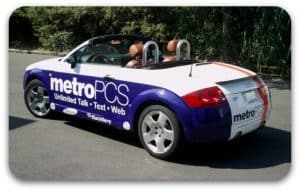The Placemat People Are Redefining Local Advertising—One Meal at a Time
If you’ve dined at a neighborhood restaurant, you’ve probably seen it: a branded paper placemat featuring local business ads, a crossword puzzle, and maybe a QR code. Welcome to the world of the placemat people—marketers turning table surfaces into high-impact media spaces.
But static ads aren’t enough anymore. Today’s consumers expect relevance, and personalization is no longer just a digital privilege. It’s creeping into traditional OOH media—and the placemat ads are a perfect canvas for it.
In this blog, we explore how the placemat people can transform their strategy through personalized content, unlocking higher engagement, better recall, and measurable ROI for brands.
The Power of Personalization in The Placemat Advertising
Why One-Size-Fits-All Placemat Ads Fall Short
In an era of behavioral targeting and algorithm-driven content, generic messaging simply doesn’t cut it. Even in hyper-local spaces like diners and cafés, audiences are diverse—and their expectations reflect that.
The placemat advertising industry has traditionally leaned into local reach: “Reach 10,000 diners per month in your neighborhood.” While this reach is valuable, what’s missing is resonance.
And resonance = relevance.
Personalization offers:
Increased ad recall
Higher interaction (e.g., QR code scans)
Deeper emotional connection
More trust in local brands
When your message feels like it’s speaking to someone, not at them, you earn more than attention—you earn interest.
What Personalization Looks Like in The Placemat Ads
From Print to Personal—Tactics That Work
Even with the static nature of print, there are several powerful ways the placemat people can deploy personalization:
✅ Demographic Segmentation
Tailor the placemat ad content based on the restaurant’s clientele. A family-friendly diner? Ads for tutoring services, pediatric care, or toy stores perform better. A downtown coffee spot? Local coworking spaces or financial services make more sense.
✅ Zip Code-Specific Messaging
Use variable printing to segment by geography. A real estate agent could feature:
“Thinking of selling in 30189? Let’s talk.”
✅ Interactive Elements
Custom trivia related to the town or region
Personalized discount codes by table number
QR codes leading to geo-targeted landing pages
These are small shifts, but they create psychological ownership—and that drives action.
The Placemat People Can Combine Print and Digital for Personalization
Bridging Offline Touchpoints with Online Behavior
The placemat people have a unique opportunity: diners are seated, idle, and often browsing their phones. That makes the table surface an ideal location for launching digital interactions.
Here’s how personalized placemat ads can lead into trackable, data-rich experiences:
QR Codes: Dynamically linked to personalized product suggestions or geotargeted offers.
NFC Tags (on laminated or premium placemats): Enable tap-to-open mobile experiences.
Short URLs with UTM parameters: Track which restaurant or region drove clicks.
Every scan or tap becomes a data point, giving advertisers feedback on which segments convert—and which messages resonate.
Real Brands Using Personalized Placemat Ad Strategies
The Placemat Advertising in Action
Let’s look at three examples of personalized placemat advertising that delivered measurable results:
🏠 Local Mortgage Broker
A broker used regional segmentation and rotated the message every quarter. In areas with rising home values, the placemat read:
“Your equity may have doubled. Ready to refinance?”
Results: A 19% increase in web form completions via QR scan.
🧃 Kids’ Nutrition Brand
Partnered with diners known for family traffic. The placemat included a coloring section and a message:
“Parents of picky eaters, scan here for our free lunchbox guide.”
Results: 3,200 downloads and 740 product sample requests in 30 days.
💇♂️ Local Salon Chain
Included personalized coupons: “Show this to your stylist for a $10 cut in Northport only.” The ad changed for other restaurant regions.
Results: 42% coupon redemption rate in under 6 weeks.
These campaigns prove that the placemat people don’t need to stay generic. Personalization unlocks relevance—and relevance drives ROI.
How to Implement Personalization in The Placemat Ads
A Step-by-Step for Smart Advertisers and Placemat Publishers
If you’re a marketer—or a member of the placemat people—here’s how to start personalizing with impact:
Segment Restaurants by Audience Profile
Group them into categories like:
Families
Commuters
Seniors
Tourists
Health-conscious diners
Use Variable Print Files
Tools like HP SmartStream or Xerox FreeFlow can help you personalize sections of the print run without redoing the entire layout.
Create Tiered Messaging
Prepare 3–4 ad variants for each product or service—each tailored to a different segment or zip code.
Embed Digital Bridges
Add short personalized URLs (with tracking)
Use scannable QR codes per campaign region
Run simple A/B testing on ad copy
Collect Data & Adjust
Use QR scan data, redemption rates, or online behaviors to tweak future campaigns. This is where the placemat advertising world begins to evolve into something data-backed and modern.
The ROI of Personalized Placemat Ads
Why It Pays to Personalize
Personalized placemat ads don’t just improve aesthetics—they drive bottom-line results.
Benefits include:
Higher recall rates (up to 80% more, according to studies on relevance in print)
Better user engagement (through calls-to-action that feel tailored)
More data for optimization (thanks to tracked codes and segmented content)






